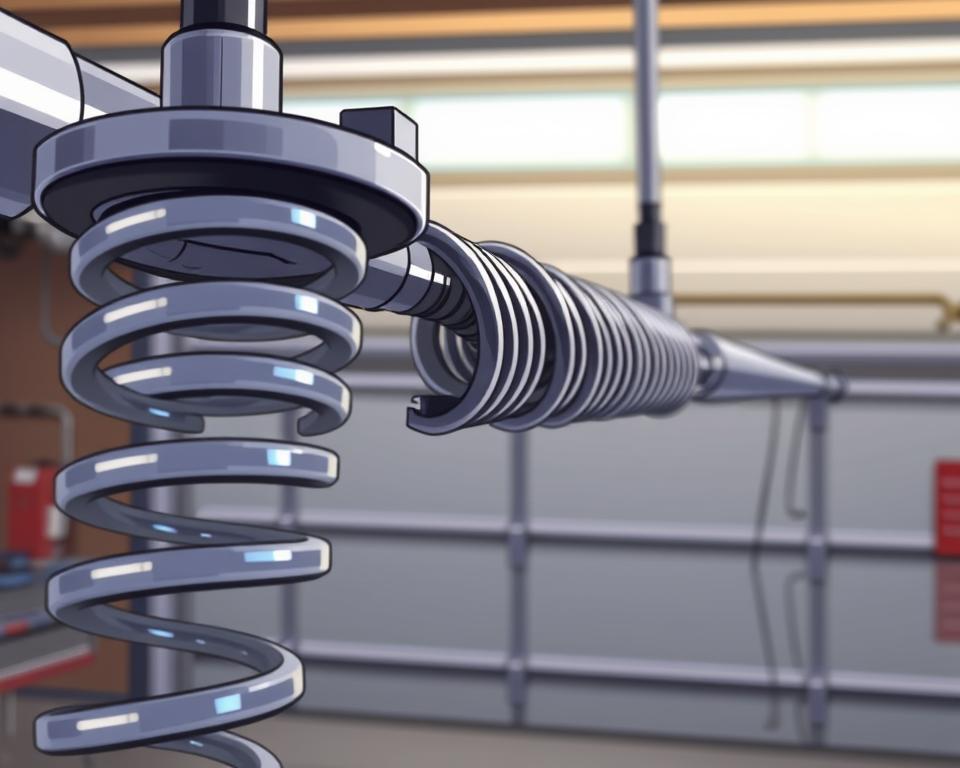For homeowners across Australia, the swift operation of a garage door is a daily expectation, one that hinges on the unheralded yet essential work of torsion springs. But when these crucial components falter, the pressing question arises: what is the garage spring replacement timeframe? In the hustle and bustle from Narre Warren to Lynbrook, downtime isn’t just inconvenient, it’s a disruption most would rather avoid. Let’s unravel the mystery surrounding garage door repair duration and set the record straight on expectations for Australian garage door maintenance.
In essence, replacing a garage door torsion spring in Australia should be swiftly handled, with most replacements being completed within the hour. Yet, factors such as spring type, complexity, and accessibility can sway this duration. Highly trained technicians are not just a recommendation but a necessity due to the technical precision and inherent risks involved.
Interestingly, while these springs are integral for a smooth and reliable garage door function, their lifespan of 10 to 15 years can be maximized through regular maintenance. But should the time for replacement come knocking, would you know where to turn? Discover how to effortlessly navigate the process and learn what to expect in terms of cost and duration in this comprehensive guide to garage spring replacement.
Understanding the Function and Lifespan of Garage Door Springs
The functionality of garage doors heavily relies on the resilience and quality of their springs. Sectional door springs play a pivotal role, holding the door’s weight as it lifts and lowers. This is not just a functional aspect but a safety one, highlighting the importance of garage door servicing to maintain these mechanisms.

Understanding the garage door spring lifespan is crucial for homeowners. Average springs offer around 10,000 cycles, which translates roughly to seven years of use, assuming a moderate usage pattern. However, with options like the TorqueMaster or high-cycle springs, lifespans can extend significantly, reaching up to 22 years or 80,000 cycles for top-tier models like Canadoor Powder-coated Lifetime springs.
A pivotal factor in garage door functionality includes the type of spring used: torsion springs are known for their durability and efficiency, supporting greater weights and lasting longer than traditional extension springs. The latter, while cost-effective, may require more frequent replacements due to their design that involves constant stretching and contracting, leading to quicker wear and tear.
- Regular maintenance, including lubrication and tension adjustments, is vital to extend the lifespan.
- These actions reduce the risks of unexpected breaks,
- which not only cause inconvenience but can also pose safety hazards.
To learn more on how to ensure the longevity of your garage door springs and improve garage door functionality, visit this helpful resource.
Lastly, while sectional door springs and other components might seem straightforward to manage, the complexity of their installation and maintenance suggests the prudence of engaging professional garage door servicing. This not only ensures that your door functions optimally but also safeguards your home against potential accidents or failures due to improperly maintained hardware.
Most cost-effective garage door Spring Replacement Process
Garage door maintenance is pivotal in extending the life of your door and ensuring it operates safely and efficiently. When it comes to cost-effective garage door maintenance, preemptive servicing and understanding the role of components are key. Torsion springs are particularly essential for maintaining garage door balance and seamless operation. These springs, designed to last for thousands of cycles, effectively bear the majority of the door’s weight enabling the door to open and close with ease.
Why Torsion Springs Are Essential for Garage Door Operation
The mechanics of a garage door are reliant on the robustness of torsion springs. Their high-tension steel mechanics are preferred for a safe and controlled movement, reducing wear and tear over an extended period. Over time, however, even the most durable torsion springs may require replacements. These replacements cost between $30 to $100 per spring, factors such as door size influencing the quantity and type of spring needed. Seasoned homeowners and qualified garage door technicians understand the significance of these components in conserving garage door integrity.
Risks and Safety Precautions of DIY Spring Replacement
Despite an abundance of online tutorials, the risks associated with DIY spring replacement are high. The potential dangers stem from the springs’ extreme tension, which, if handled incorrectly, can cause injury or even property damage. Subsequently, garage door repair safety protocols firmly suggest that homeowners avoid DIY attempts. Instead, entrust the task to a trained spring replacement expert, capable of ensuring that door balance and tension are accurately restored post repair.
Finding a Qualified Technician for Spring Repair
Finding a professional garage door technician is crucial for the accurate assessment and repair of garage doors. Partnerships with garage door repair service providers that carry various quality spring options can contribute greatly to door longevity. A properly serviced door, under the hands of a professional garage door technician, will not only function efficiently but also stand the test of time, thereby proving to be a cost-effective solution in the long run. Committing to regular maintenance, at least once annually, can prevent unexpected hindrances and promote overall door health. With the average national cost for garage door spring replacement ranging from $150 to $350, the investment in a qualified garage door technician is invaluable for preserving the mechanics and safety of your garage door system.
FAQ
Q: How long does a garage spring replacement take in Australia?
A: A garage door spring replacement in Australia typically takes about one hour on-site, though this can vary depending on the spring type, garage door complexity, and accessibility.
Q: What is the function of garage door springs, and how long do they last?
A: Garage door springs, often regarded as the ‘muscles’ of the system, are crucial in counterbalancing the garage door’s weight, facilitating its movement. The lifespan of torsion springs on average is between 10 to 15 years, subject to maintenance and usage patterns.
Q: Why are torsion springs essential for garage door operation?
A: Torsion springs are integral to a garage door’s mechanics, managing the door’s weight to ensure a stable, controlled opening and closing action. They provide durability and support, making them a pivotal aspect of the garage door’s efficiency.
Q: What are the risks and safety precautions of DIY spring replacement?
A: DIY spring replacement carries significant dangers due to the high tension of springs. The risks include potential injury from improper handling or accidents. It’s crucial to use PPE and proper tools, although homeowners are strongly advised to seek professional assistance to prevent mishaps and ensure correct installation.
Q: How can I find a qualified technician for spring repair?
A: Look for a professional garage door repair service with experienced technicians qualified to assess, repair, and service garage door springs. Ensure they offer comprehensive maintenance and provide a range of spring options that match your door type while focusing on quality and long-term value.
Q: What maintenance protocols extend the lifespan of garage door springs?
A: Regular servicing, including annual check-ups to assess balance and tension, routine lubrication, tightening loose components, and adjusting spring tension, extend the life of garage door springs and improve door operation.
Q: Can heavy usage reduce the lifespan of my garage door springs?
A: Yes, heavy or frequent usage can lead to a reduction in the lifespan of garage door springs as it increases wear and tear. Regular maintenance can mitigate this effect to some extent.
Q: How do I know if my garage door springs need replacement?
A: Warning signs include difficulty lifting the door, a loud bang indicating a break, or visibly damaged or rusted springs. Also, if the door isn’t opening smoothly or if it has been a significant amount of time since the last replacement, the springs may need attention.
Q: Is it cost-effective to replace garage door springs before they break?
A: Yes, preemptive replacement of garage door springs can be economical in the long term as it prevents potential damage to other parts of the door system and avoids the inconvenience of sudden breakdowns.
Q: Are there different types of springs for different garage doors?
A: Yes, there are various types of springs, such as torsion and extension springs, each suitable for different door weights and sizes. The correct type and size must be selected based on specific door requirements.
Source Links
- Garage Door Spring Repair & Replacement: All You Need To Know – Garage Door Repairs | Roller Door Service Gold Coast & Brisbane
- Garage Door Broken Spring Replacement – GTA
- Garage Door Spring Life Cycle: Repair, Maintenance, and Replacement Guide
- Understand Garage Door Springs: Different Types Explained
- Understanding Garage Door Springs: Torsion vs. Extension
- What Is The Cost To Replace A Garage Door Spring?
- The Cost Factor Unveiled: Budget-Friendly Tactics for Efficient Garage Door Spring Repair

